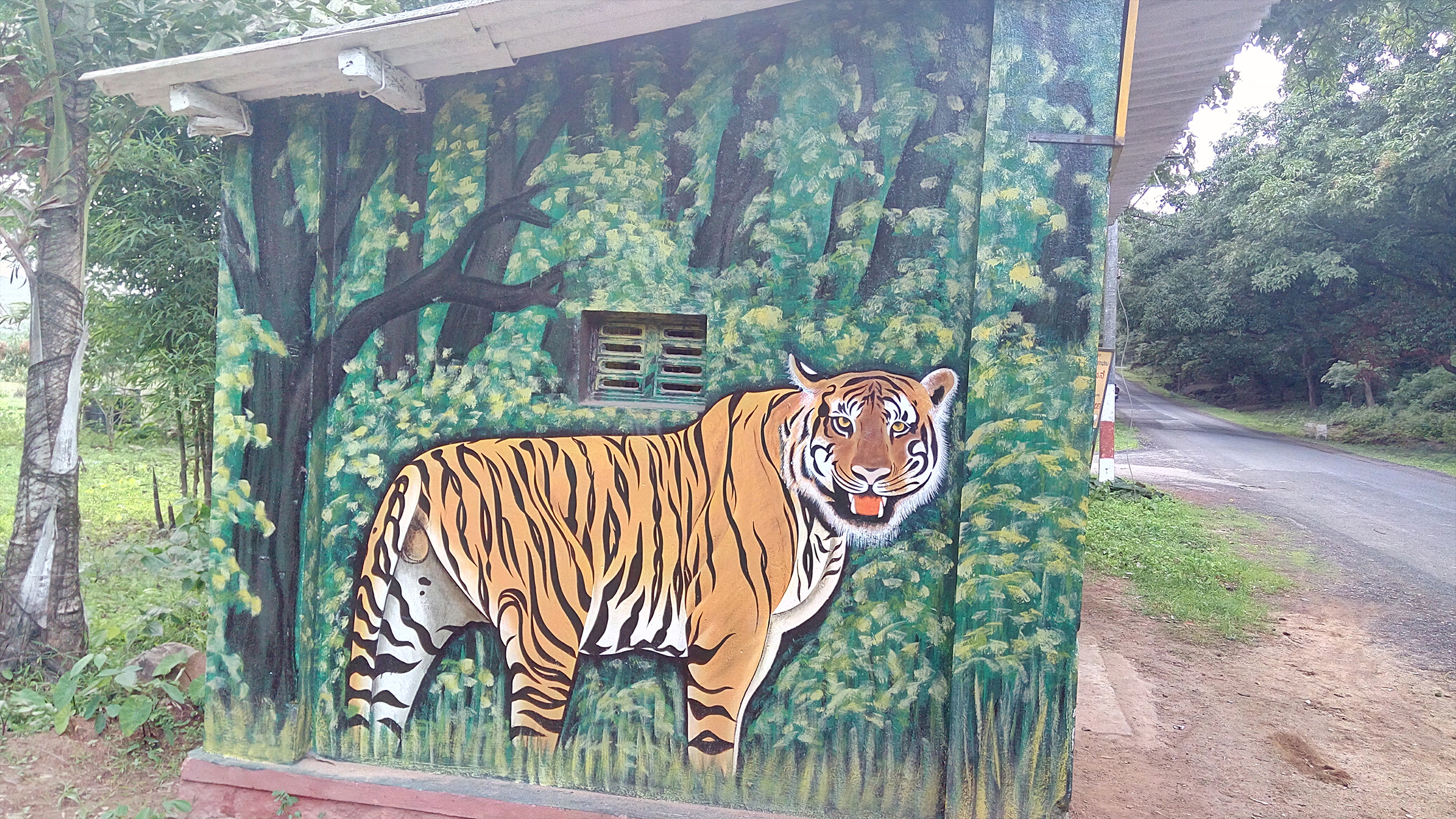 Listen to this article
•
15:34 min
Listen to this article
•
15:34 min
Visiting the forests of the Uttara Kannada district in Karnataka is a thrilling prospect for lovers of wildlife. The region is home to the Kali Tiger Reserve (previously called the Anshi-Dandeli Tiger Reserve), a lush sanctuary for birdlife as well as big mammals like the elephant, panther, and leopard. Now, these animals can be seen on bus stands in the area too, on the highway that passes through the Jagalapet section of the Haliyal Taluka.

Like any other public space, these bus stands too had turned into garbage dumps. Some didn’t even have walls, so the Forest Department first set about repairing them. Then, Range Forest Officer M.C. Hiremath met with Jahangir, an artist from Dandeli and turned each shelter into a canvas to illustrate the region’s biodiversity. Each stand has a theme. One displays the snakes found in the region, another is dedicated to the variety of native frogs that live in these jungles, and a third is filled with clusters of colourful butterflies. Today, more than 15 bus stands have these beautiful collages of wildlife. Each painting is accompanied by information on the species in both Kannada and English.
There are other initiatives that use public spaces to bring about environmental awareness too. The railway station of Sawai Madhopur in Rajasthan for instance, is a stellar example of art and conservation coming together. The station is the gateway to Ranthambore National Park, and its walls and arches are filled with lifelike paintings of the birds, big cats, and banyan trees that call the sanctuary home.
In other parts of the world, activists and street artists have been using public spaces to voice their concerns. A mural project in East London invited artists to fill the walls along a park with vibrant works depicting the world’s threatened species. In Bangkok, Thailand, a group of graffiti artists teamed up with a veterinary clinic, and filled its street-facing walls with paintings of black panthers to bring attention to a hunting case that was in the news. The bus stops in the Kali Reserve have a more modest purpose: To pique the interest of passers-by, and inspire cleanliness in those that use the space. It seems to be working too. Park officials say that even speeding motorists slow down for a glimpse of the artwork.







